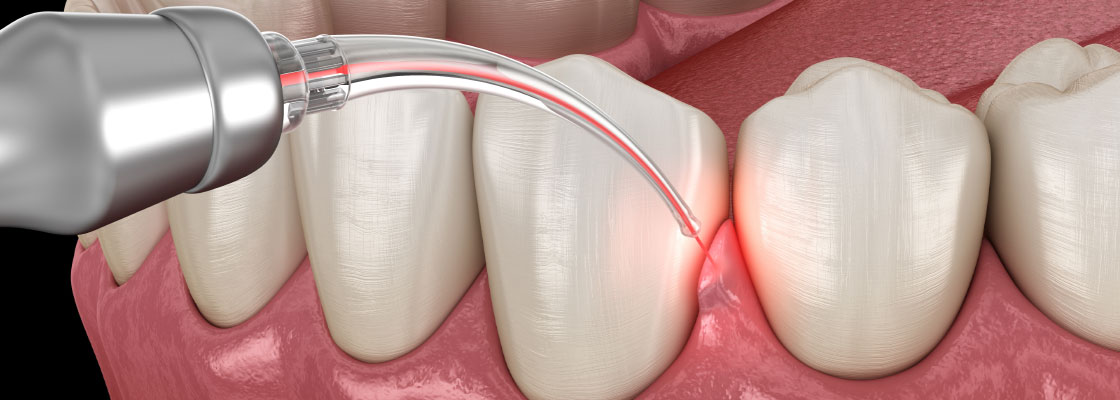Laser dentistry has additional benefits including less damage and blood loss than traditional surgery. Procedures with a lasers are also less likely to need stitches, and in some cases, may not even require anesthesia.

How do dental lasers work?
All lasers work by emitting a specific wavelength of light that reacts to various pigments in tissue. When paired with a specific pigment, the light waves produce a thermal reaction, creating heat. These reactions deactivate most oral bacteria with little to no damage to the surrounding tissue. This results in faster healing times and less postoperative pain. Additionally, some lasers increase vascularity and blood vessel density to the treated area, which also speeds up healing.
Are dental lasers safe?
Dental lasers are extremely safe in the hands of a trained professional. They are superior tools for multiple procedures. While the media portrays lasers as dangerous weapons attached to the heads of sharks, dental lasers are incredibly precise tools that affect tissues no further than 2 millimeters from the tip of the device. One thing to keep in mind is the light produced can be harmful to the eye, so specialized eyewear must be used for the entirety of the procedure.
What are the benefits of laser dentistry?
Dental lasers have multiple benefits which include no anesthesia for some procedures, less need for sutures, faster healing times and lower chance of infection. While lasers cannot be used for every procedure, they are often used in addition to many traditional procedures to get a better end result.
There are many uses for dental lasers which include:
- Reshaping gum tissue
- Removing diseased gum tissues
- Kill bacteria in gum disease
- Speed up healing and reduce discomfort from with cold sores and canker sores
- Accelerate teeth whitening procedures
- Biopsies